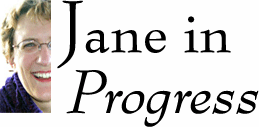 |
|
 |
 |
Looking for tips and tricks to the art of writing for television? Welcome to the blog of experienced television writer Jane Espenson. Check it out regularly to learn about spec scripts, writing dos and don'ts, and what Jane had for lunch! (RSS:  ) |
|
|
Home » Archives » October 2007 » Look Alive
[Previous entry: "Damp Thoughts"] [Next entry: "Who Cans Worms, Anyway?"]
10/22/2007: Look Alive
I used a term in the last post that I'm not sure I've talked about yet. I mentioned keeping a character "alive" in a scene. You probably figured it out -- if a character doesn't speak for a long time, they disappear from a scene. In general, this is a bad thing. Sure, the marine guarding the door doesn't have to say anything, but if you bother to have a major character in a scene, they should be kept alive in it.
This is obviously going to be a consideration when you're actually working on a show, because actors generally hate being treated as set decoration -- if they're in a scene but not in it, they'd often rather be cut. But it's also important in your spec scripts; a silent character is even more prone to disappear on the page than he is on the screen, given that on screen we can see him.
It's also, in general, a good idea to give all the important players in a scene a line up near the front of the scene. It's very distracting to a reader to have someone start speaking in the middle of the scene if the reader wasn't even aware they were in the room. I know, you mentioned them in the stage direction at the top, but that's kind of the point: if a character isn't actually speaking, they're not really fully present to the reader.
It'll feel like you're directing traffic when you start writing to accommodate this. You're handing out lines based on reasons other than the logic of the situation, which can feel very unnatural. But it is important and is done so automatically by working writers that your script will look more professional for having accomplished it.
Lunch: shrimp dumplings, pork dumplings, chicken feet (which I enjoy because they are both delicious and a genuine psychological challenge)
|
|
|
 |
|
Get Blog Updates Via Email
|
|
 |

